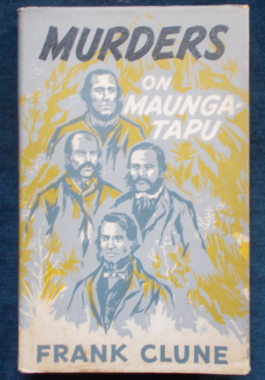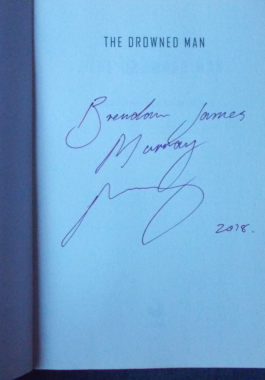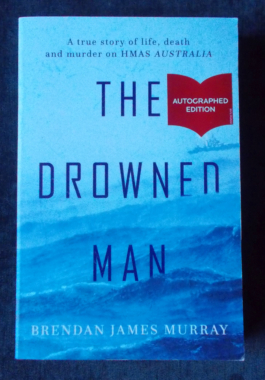Clara and David Harris were married on Valentine's Day. Young and in love, they developed a thriving dental business, built a half-million dollar mansion and raised the perfect family. Then whispers of David's affair with his office assistant began to circulate through their exclusive Houston social circle. A private detective confirmed the rumours. When Clara saw David with his mistress, she attacked the woman - then got behind the wheel of her silver Mercedes and crushed her husband to death under its wheels. A moment of madness - or a calculated crime of passion? What the headlines ultimately revealed was a high profile marriage running on empty, marital infidelity, a woman's deadly passion and the private hell behind the public life of the rich and privileged. With 8 pages of black and white photographs.
-

Out Of Control: Steven Long
$12.00 -

The scene awaiting the policemen entering the charming suburban house at 313 Carl Drive was one they would never forget. Three children and their mother had been hacked to death in their beds, the sheets and walls soaked in blood. A butcher knife and an axe lay nearby. There appeared to be no physical evidence and the detective at first suspected a bungled robbery. But as the clues were sifted and family members and friends were questioned, an appalling possibility presented itself: Could David Hendricks, grief-stricken father, away on a business trip, have methodically killed his family before he left? And why would a successful business man and devoted member of a fundamentalist religious group want his entire family eliminated? The prosecution painted a much darker picture of David Hendricks...Convicted by his first jury, awarded a new trial, a second jury concluded that Hendricks had not been proven guilty - beyond a reasonable doubt. Illustrated with black and white photos.
-
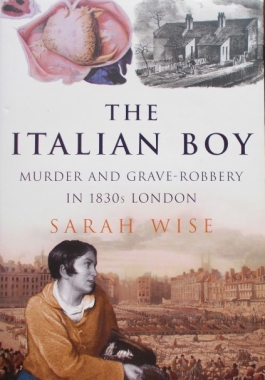
The Italian Boy: Sarah Wise
$30.00At the end of 1831, authorities unearthed a series of crimes at 3 Novia Scotia Gardens that appeared to be a copycat of the infamous Burke and Hare killings in Edinburgh only three years earlier. Soon three body-snatchers were on trial for providing the anatomy schools of London with suspiciously fresh bodies for dissection. They became famous as the London Burkers and their story was dubbed "The Italian Boy" case. The ensuing uproar forced legislation to end body-snatching in Britain. As well as covering the actual case, this book is a fascinating window on the lives of the poor of 1830s London. -
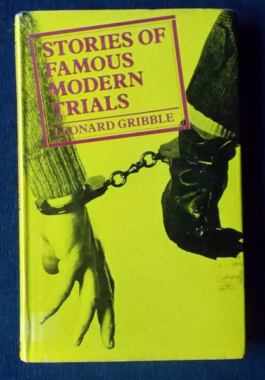 With such intriguing chapters as: The Riddle of the Bordereau (the Dreyfus case); Murder in High Society (the murder of Stanford White and the affair of Evelyn Stanford nee Nesbit and Harry Thaw) ; the Tragedy of Oscar Slater (the murder of Marion Gilchrist); The Original Winslow Boy (the tragedy caused by the theft of a five shilling postal order); A Matter of High Treason (Roger Casement); The Green Bicycle Mystery (the murder of Bella Wright) ; Buccaneer in Morning Coat (Horatio Bottomley, swindler par excellence) ; The Incredible Fire Raisers (the Leopold Harris arson gang) ; Justice Comes To Nuremburg; The Double Betrayal (the case of Klaus Fuchs); Teenagers On A Roof (the thrill-killing of a police man in London, 1952) ; The Great Train Robbers.
With such intriguing chapters as: The Riddle of the Bordereau (the Dreyfus case); Murder in High Society (the murder of Stanford White and the affair of Evelyn Stanford nee Nesbit and Harry Thaw) ; the Tragedy of Oscar Slater (the murder of Marion Gilchrist); The Original Winslow Boy (the tragedy caused by the theft of a five shilling postal order); A Matter of High Treason (Roger Casement); The Green Bicycle Mystery (the murder of Bella Wright) ; Buccaneer in Morning Coat (Horatio Bottomley, swindler par excellence) ; The Incredible Fire Raisers (the Leopold Harris arson gang) ; Justice Comes To Nuremburg; The Double Betrayal (the case of Klaus Fuchs); Teenagers On A Roof (the thrill-killing of a police man in London, 1952) ; The Great Train Robbers. -
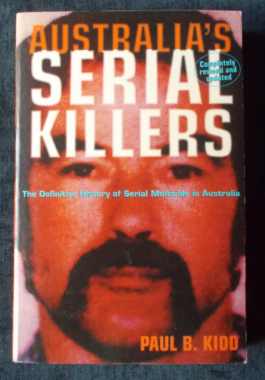
Mass killers, spree killers, repeat offenders - the world now knows them as serial killers. The author covers, in unwavering detail, thirty three true stories of serial killers, dating back to our earliest days: Alexander Pearce, The Cannibal Convict; John Lynch, the Berrima Axe Murderer; Martha Rendell, the Murderous Mistress; Edward Joseph Leonski, the Brownout Strangler; John Wayne Glover, the Granny Killer; The 'Bodies in the Barrels' Snowtown Killings, the Backpacker Murders and many more. Illustrated with black and white photographs.
-
 The Goatfell Murder: Near the summit of Goatfell, the body of Edwin Robert Rose was found stuffed under a granite boulder on 28 July 1889. He was a 32-year-old builder's clerk from London who had last been seen alive on the mountain a fortnight before. His head and face had been brutally smashed, probably by rocks. The last person seen in his company, a 26-year-old engineering worker known as John Annandale, was nowhere to be found. Annandale's real name was John Watson Laurie, a pattern maker for a Glasgow locomotive firm. He was caught by police two months later and at the end of a two-day trial under an impatient judge he was found guilty of murder, despite the lack of forensic evidence or any witnesses to the deed. But was there a miscarriage of justice? The Ardlamont Mystery: Alfred John Monson began working as a gentleman's tutor for the Hambrough family in 1891. In 1893 he took the lease on the Ardlamont estate in Argyll for the shooting season. On 10 August he took Windsor Dudley Cecil Hambrough, his 20-year-old pupil, for a day's hunting in an area of woodland. A third man joined them, Edward Scott, a friend of Monson. Estate workers heard a shot, then saw Monson and Scott running to Ardlamont House carrying the guns. Monson alleged that Hambrough had shot himself in the head by accident while climbing a fence. But with very large insurance policies having been taken out less than a week before... John Donald Merrett: He was tried for the murder of his mother, Bertha Merrett. It was at first believed that she had committed suicide - but it was discovered that Merrett had been defrauding her. His defence was skilful and the Jury returned a verdict of "Not Proven". Not proven - but was he innocent? The Portencross Murder: Mary Gunn, her sister Jessie McLaren and her sister's husband Alex McLaren were enjoying a quiet evening at an isolated cottage when six shoots were fired. Jessie and Alex were wounded - but Mary was dead. The family lived quietly; and were considered to be 'well-off' in the locality. The only clues were six footprints, a few spent bullets and evidence that a stranger had been asking the way to Portencross...
The Goatfell Murder: Near the summit of Goatfell, the body of Edwin Robert Rose was found stuffed under a granite boulder on 28 July 1889. He was a 32-year-old builder's clerk from London who had last been seen alive on the mountain a fortnight before. His head and face had been brutally smashed, probably by rocks. The last person seen in his company, a 26-year-old engineering worker known as John Annandale, was nowhere to be found. Annandale's real name was John Watson Laurie, a pattern maker for a Glasgow locomotive firm. He was caught by police two months later and at the end of a two-day trial under an impatient judge he was found guilty of murder, despite the lack of forensic evidence or any witnesses to the deed. But was there a miscarriage of justice? The Ardlamont Mystery: Alfred John Monson began working as a gentleman's tutor for the Hambrough family in 1891. In 1893 he took the lease on the Ardlamont estate in Argyll for the shooting season. On 10 August he took Windsor Dudley Cecil Hambrough, his 20-year-old pupil, for a day's hunting in an area of woodland. A third man joined them, Edward Scott, a friend of Monson. Estate workers heard a shot, then saw Monson and Scott running to Ardlamont House carrying the guns. Monson alleged that Hambrough had shot himself in the head by accident while climbing a fence. But with very large insurance policies having been taken out less than a week before... John Donald Merrett: He was tried for the murder of his mother, Bertha Merrett. It was at first believed that she had committed suicide - but it was discovered that Merrett had been defrauding her. His defence was skilful and the Jury returned a verdict of "Not Proven". Not proven - but was he innocent? The Portencross Murder: Mary Gunn, her sister Jessie McLaren and her sister's husband Alex McLaren were enjoying a quiet evening at an isolated cottage when six shoots were fired. Jessie and Alex were wounded - but Mary was dead. The family lived quietly; and were considered to be 'well-off' in the locality. The only clues were six footprints, a few spent bullets and evidence that a stranger had been asking the way to Portencross... -
 The author took the unusual step of writing this book of case histories with the comments of children and young people who came before him in his capacity as a Childrens' Court magistrate. Some of the stories are horrifying and given without any 'glossing over' of the horror; some of the offences were committed by children, many against children but it is clear that everything possible was done to help the child become a member of the community again. These are stories of rape, drug addiction, perversion. incest, corruption, prostitution - and of children who deliberately committed offences to get to Court to settle their own problems. These children will haunt the reader - all innocent victims of parents, their environment, ignorance or predatory monsters. The title page contains a warning to parents...
The author took the unusual step of writing this book of case histories with the comments of children and young people who came before him in his capacity as a Childrens' Court magistrate. Some of the stories are horrifying and given without any 'glossing over' of the horror; some of the offences were committed by children, many against children but it is clear that everything possible was done to help the child become a member of the community again. These are stories of rape, drug addiction, perversion. incest, corruption, prostitution - and of children who deliberately committed offences to get to Court to settle their own problems. These children will haunt the reader - all innocent victims of parents, their environment, ignorance or predatory monsters. The title page contains a warning to parents... -
 London, 1910 - the city is rocked by its first encounter with foreign gangsters. In December, a group of Russian anarchists were surprised while burgling a jeweller's shop in Houndsditch. They shot and killed three policemen and wounded two others. Within two weeks, most of the gang had been captured. Then the police were informed that the last two members of the gang were hiding at 100 Sidney Street. The police called in the military, local residents were evacuated and the firefight raged for six hours, culminating in the burning of the house and the discovery of the two agitators' bodies in the ruins. On New Year's Day, Leon Beron, a middle-aged Russian Jew, was found battered to death on Clapham Common. Knife cuts on his cheeks, inflicted after death, formed the shape of a rough 'S' - rumour said it was the revenge murder of an informer, 'S' being the initial letter for 'spy' in both Russian and Polish. Steinie Morrison, who had been seen in his company the night before, was arrested and charged with Beron's murder, and sentenced to hang. This was later commuted to life in prison. Morrison protested the change of sentence and for the next ten years, demanded that the original sentence be carried out, proclaiming his innocence and staging hunger strikes. He never changed his story, not even by the smallest detail, and died ten years later in prison. Was an innocent man convicted? And did the murder of Beron have any connection to the Siege of Sidney Street? With black and white photographs.
London, 1910 - the city is rocked by its first encounter with foreign gangsters. In December, a group of Russian anarchists were surprised while burgling a jeweller's shop in Houndsditch. They shot and killed three policemen and wounded two others. Within two weeks, most of the gang had been captured. Then the police were informed that the last two members of the gang were hiding at 100 Sidney Street. The police called in the military, local residents were evacuated and the firefight raged for six hours, culminating in the burning of the house and the discovery of the two agitators' bodies in the ruins. On New Year's Day, Leon Beron, a middle-aged Russian Jew, was found battered to death on Clapham Common. Knife cuts on his cheeks, inflicted after death, formed the shape of a rough 'S' - rumour said it was the revenge murder of an informer, 'S' being the initial letter for 'spy' in both Russian and Polish. Steinie Morrison, who had been seen in his company the night before, was arrested and charged with Beron's murder, and sentenced to hang. This was later commuted to life in prison. Morrison protested the change of sentence and for the next ten years, demanded that the original sentence be carried out, proclaiming his innocence and staging hunger strikes. He never changed his story, not even by the smallest detail, and died ten years later in prison. Was an innocent man convicted? And did the murder of Beron have any connection to the Siege of Sidney Street? With black and white photographs. -
 After fourteen years of marriage, Mel Jacob's life looked as perfect as the roses perched above her white picket fence. The nice house in the suburbs, two great kids, a good husband. Until...her seemingly saintly husband was jailed for two years. This recounts Mel's funny, moving and insightful journey as she navigates single parenthood, prison visitations and nosy neighbours...and tells of the family left behind: the grief, the stigma and the conversational minefields of her husband's whereabouts, as well as the logistical problems of making a baby sibling for her two children, and why it's not appropriate to tell people that Daddy's in jail. 'So why did you marry Dad?' my daughter asked. 'Well, over time I got to know him and he made me laugh, and - and I knew deep down that, that even though we were really different...he was a good person.' Without skipping a beat, she said, 'He's not that good, he's in jail!'.
After fourteen years of marriage, Mel Jacob's life looked as perfect as the roses perched above her white picket fence. The nice house in the suburbs, two great kids, a good husband. Until...her seemingly saintly husband was jailed for two years. This recounts Mel's funny, moving and insightful journey as she navigates single parenthood, prison visitations and nosy neighbours...and tells of the family left behind: the grief, the stigma and the conversational minefields of her husband's whereabouts, as well as the logistical problems of making a baby sibling for her two children, and why it's not appropriate to tell people that Daddy's in jail. 'So why did you marry Dad?' my daughter asked. 'Well, over time I got to know him and he made me laugh, and - and I knew deep down that, that even though we were really different...he was a good person.' Without skipping a beat, she said, 'He's not that good, he's in jail!'. -
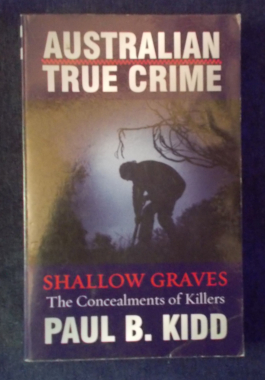 Shallow graves play a grim part in many of Australia's most mysterious, bizarre and horrendous murder cases. And Australia's bushland, beaches, deserts, foreshores and suburban landscapes offer many opportunities for a murderer to hide his victim. But in this updated edition, Kidd points out how even the best-laid plans of the most devious can go astray when a body turns up. Illustrated with black and white photographs.
Shallow graves play a grim part in many of Australia's most mysterious, bizarre and horrendous murder cases. And Australia's bushland, beaches, deserts, foreshores and suburban landscapes offer many opportunities for a murderer to hide his victim. But in this updated edition, Kidd points out how even the best-laid plans of the most devious can go astray when a body turns up. Illustrated with black and white photographs. -
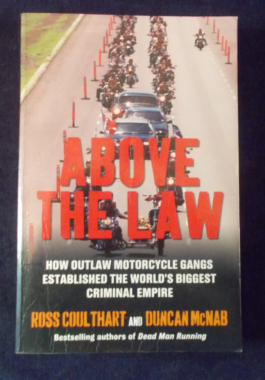 A forensic examination of the global future of organised crime - now being operated on a massive scale by outlaw motorcycle gang - and the difficulties faced by the Australian police in tackling the burgeoning crime empire that outlaw motorcycle gangs are developing in Australia and wherever else biker gangs flourish. It's a hard and chilling look at the global future of organised crime and reveals that the world's most successful criminal empire is now being operated on a massive scale by outlaw motorcycle gangs - an empire that is growing in power, reach and ruthlessness, far surpassing the threats posed by the Mafia, Russian syndicates, Chinese Triads and Japanese Yakuza. Outlaw motorcycle gangs are now being acknowledged as the greatest current organised crime threat with an international empire that is sophisticated, bloody and brutal. It is also both strategic and opportunistic - where they cannot dominate, they broker alliances. Here is how it all started: the turf wars that were fought, the deals that were done, and how the sea of cash that was earned is now being legitimised. It also reveals how law enforcement at an international level is losing the battle against the gangs. Using exclusive insider sources on four continents, this is the first contemporary account of one of the biggest criminal stories of our time.
A forensic examination of the global future of organised crime - now being operated on a massive scale by outlaw motorcycle gang - and the difficulties faced by the Australian police in tackling the burgeoning crime empire that outlaw motorcycle gangs are developing in Australia and wherever else biker gangs flourish. It's a hard and chilling look at the global future of organised crime and reveals that the world's most successful criminal empire is now being operated on a massive scale by outlaw motorcycle gangs - an empire that is growing in power, reach and ruthlessness, far surpassing the threats posed by the Mafia, Russian syndicates, Chinese Triads and Japanese Yakuza. Outlaw motorcycle gangs are now being acknowledged as the greatest current organised crime threat with an international empire that is sophisticated, bloody and brutal. It is also both strategic and opportunistic - where they cannot dominate, they broker alliances. Here is how it all started: the turf wars that were fought, the deals that were done, and how the sea of cash that was earned is now being legitimised. It also reveals how law enforcement at an international level is losing the battle against the gangs. Using exclusive insider sources on four continents, this is the first contemporary account of one of the biggest criminal stories of our time. -
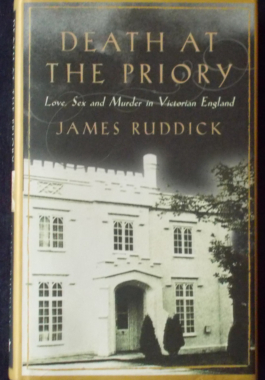 In 1875, beautiful, vivacious widow Florence Ricardo married Charles Bravo, a dashing barrister. The marriage seemed to be a happy one, although society gossips whispered that Bravo had married Florence for her fortune. Behind his charming public persona, Bravo was a brutal, vindictive man who dismissed his wife's devoted companion Mrs. Cox and regularly subjected Florence to violent abuse. Four months after the wedding, Bravo collapsed and for fifty-five hours - with some of London's most distinguished physicians in attendance - suffered a slow and agonising death. All the doctors agreed - he had been poisoned. The police were called in and everyone in the Priory, the house in South London in which he and Florence had lived, was under suspicion. The investigation was detailed and sensational and such was the public interest that it even eclipsed the coverage of the Prime Minister's negotiations with Egypt and the Prince of Wales' tour of India. The suspects included Mrs. Cox; George Griffiths, a coachman with a grudge against Bravo and at Florence Bravo herself. This is the recreation of the case with new evidence to conclusively prove who did kill Charles Bravo.
In 1875, beautiful, vivacious widow Florence Ricardo married Charles Bravo, a dashing barrister. The marriage seemed to be a happy one, although society gossips whispered that Bravo had married Florence for her fortune. Behind his charming public persona, Bravo was a brutal, vindictive man who dismissed his wife's devoted companion Mrs. Cox and regularly subjected Florence to violent abuse. Four months after the wedding, Bravo collapsed and for fifty-five hours - with some of London's most distinguished physicians in attendance - suffered a slow and agonising death. All the doctors agreed - he had been poisoned. The police were called in and everyone in the Priory, the house in South London in which he and Florence had lived, was under suspicion. The investigation was detailed and sensational and such was the public interest that it even eclipsed the coverage of the Prime Minister's negotiations with Egypt and the Prince of Wales' tour of India. The suspects included Mrs. Cox; George Griffiths, a coachman with a grudge against Bravo and at Florence Bravo herself. This is the recreation of the case with new evidence to conclusively prove who did kill Charles Bravo. -

Crime Scene: Esther McKay
$22.00Day after day my life was consumed by killings, distress and gruesome sites, each one adding another piece to an ever-growing mosaic that seemed to be made up of bloodied disposable gloves, plastic bags and human waste... When Esther McKay, an idealistic young constable with the NSW police, entered the tough, male-dominated world of forensic investigation, she was determined to hold her own. She soon found herself at deeply confronting crime scenes, often working alone and without supervision. After years of long, lonely, exhausting days and nights, and following a particularly harrowing high-profile case involving the disappearance of two young boys, Esther had a break-down and was diagnosed with post-traumatic stress disorder. Esther McKay takes us inside the life of a forensic investigator, and reveals as never before the extraordinary demands and dangers of forensic work. -
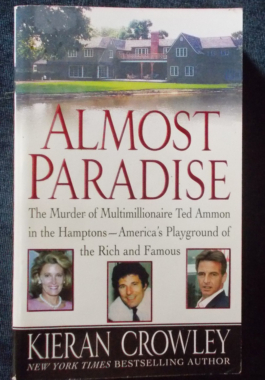 He was a multimillionaire but even his wealth and power could not save him. On October 22, 2001, handsome multimillionaire financier Ted Ammon was found bludgeoned to death in the magnificent East Hampton mansion he'd built with his beautiful - and volatile - wife, Generosa. She stood to make millions, but it wasn't the money that made Ted's friends suspicious: Generosa Ammon had a history of violent outbursts and bizarre obsessions. A talented interior decorator, Generosa had fashioned a lavish lifestyle for her husband and their two children, divided between Fifth Avenue, the Long Island estate, and a manor house in England. But when Generosa discovered Ted had a mistress, her demons were unleashed and she began a very public affair with Danny Pelosi, a strikingly handsome womaniser who was also her electrician. She called him her "tool belt guy." But he was also an ex-con who was suspected of playing a pivotal role in Ted's murder and the final destruction of a once-perfect family. Illustrated with photographs.
He was a multimillionaire but even his wealth and power could not save him. On October 22, 2001, handsome multimillionaire financier Ted Ammon was found bludgeoned to death in the magnificent East Hampton mansion he'd built with his beautiful - and volatile - wife, Generosa. She stood to make millions, but it wasn't the money that made Ted's friends suspicious: Generosa Ammon had a history of violent outbursts and bizarre obsessions. A talented interior decorator, Generosa had fashioned a lavish lifestyle for her husband and their two children, divided between Fifth Avenue, the Long Island estate, and a manor house in England. But when Generosa discovered Ted had a mistress, her demons were unleashed and she began a very public affair with Danny Pelosi, a strikingly handsome womaniser who was also her electrician. She called him her "tool belt guy." But he was also an ex-con who was suspected of playing a pivotal role in Ted's murder and the final destruction of a once-perfect family. Illustrated with photographs. -
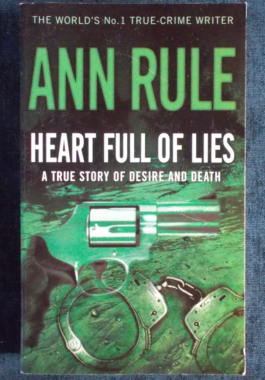
Heart Full Of Lies: Ann Rule
$10.00Liysa and Chris Norton seemed the perfect couple: Chris - tall, athletic and handsome, a pilot for Hawaiian Airlines; Liysa - attractive, seductive, an acclaimed surf photographer. Their son, Bjorn, looked just like his dad and they were raising Liysa's son by a previous marriage. They had beautiful homes on the mainland and in Hawaii. But soon after their idyllic marriage on a moonlit beach, Liysa revealed a rapacious side that Chris had not seen before, and she complained to her friends that Chris was a heavy drinker who beat her. Chris struggled to keep the marriage from unravelling but on a sunny morning in October 2000 he lay dead at a remote campsite. Liysa drove in distress to a friend's house - it appeared that she had been attacked and claimed that she had shot Chris in self-defence but the Oregon state detectives were suspicious of her account. Crime scene evidence led detectives to wonder if Liysa was a killer, not a victim. Her controversial trial stunned all who thought they knew her. A lifetime of sociopathic manipulations and lies had been expertly hidden behind her façade of perfection - as was her rage to destroy any obstacle to her ultimate happiness, even if it was the man she vowed to love forever. -
 October, 2011: At first it looked like a swag, said the grader driver who found the body just off the road outside the outback town of Katherine. Police identify the dead man as Ray Nicefero, who'd recently appeared in court for aggravated assault and breaching a domestic violence order. Three days later, three young local suspects were arrested: Christopher Malyschko; Darren 'Spider' Halfpenny; and 19-year-old indigenous Zak Grieve. A month later, Bronwyn Buttery, Ray's former partner and Christopher's mother, is arrested. But when the accused face court in the rough justice system of the Northern Territory, it soon becomes apparent there are few certain, provable facts to be had. Depending on who was talking, a loving friend could be an abusive monster; a battered wife a conniving temptress. And a joke between mates about the best way to dispose of a body becomes a conspiracy to murder. The outcome of the case is no less murky, thanks to the NT's mandatory sentencing laws, which, the judge said, 'brings about injustice'. This is the story of murder in an outback town and the extraordinary aftermath; and it raises important questions such as how an indigenous man who was not present at a murder can be sentenced to jail for twenty years.
October, 2011: At first it looked like a swag, said the grader driver who found the body just off the road outside the outback town of Katherine. Police identify the dead man as Ray Nicefero, who'd recently appeared in court for aggravated assault and breaching a domestic violence order. Three days later, three young local suspects were arrested: Christopher Malyschko; Darren 'Spider' Halfpenny; and 19-year-old indigenous Zak Grieve. A month later, Bronwyn Buttery, Ray's former partner and Christopher's mother, is arrested. But when the accused face court in the rough justice system of the Northern Territory, it soon becomes apparent there are few certain, provable facts to be had. Depending on who was talking, a loving friend could be an abusive monster; a battered wife a conniving temptress. And a joke between mates about the best way to dispose of a body becomes a conspiracy to murder. The outcome of the case is no less murky, thanks to the NT's mandatory sentencing laws, which, the judge said, 'brings about injustice'. This is the story of murder in an outback town and the extraordinary aftermath; and it raises important questions such as how an indigenous man who was not present at a murder can be sentenced to jail for twenty years.



